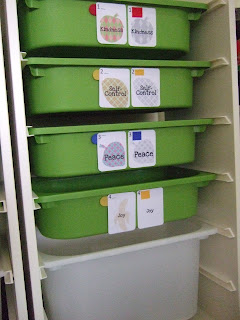 Since young, KB loves music more than anything he does, and I could resonate with him. I too love music and could not live without it. I reflected upon our 'musical journey'.
Since young, KB loves music more than anything he does, and I could resonate with him. I too love music and could not live without it. I reflected upon our 'musical journey'.Babyhood - listening
Toddler - movement and listening, occasional instruments (drums, bells, percussion, triangle etc.)
Preschoolers - praise & worship, signing with singing, movement, solfege, intro note reading, rhythm, instruments
I wanted to inspire him on solfege and pulled out this incredibly inspirational clip. KB and I learnt this song when he was 3 years old, so its an old favourite, but this is way inspiring and fun and we can't help but wanna dance with it too.
Why is listening important?
KB at 4.5yrs old went for a simple interview to see if his fingers could curl and play last year. It seemed that he was and he played a single song under the instruction of a teacher. Even his last finger was able to tap on the keyboard nicely. He was happy when he came home and went to the keyboard to tinkle abit. I printed out the score for him and he played for daddy to hear.
But I didnt sign him up for that class. If looking at the score and learning to play is what he is doing now, when will he develop a ear for music? I decided that it is best to delay playing and learn to listen well. I know he has occassionally told me how sad or happy a music piece is, he is learning to listen with his heart, not just the rhythm, but the feel. My brother, a guitarist and drummer commented that KB has a good sense of rhythm.
And because music is a language of the heart, we really needed time to develop that. We need both technical aptitude and inspiration. In piano education a good ear and good sight reading are both important.
Character, character, character
I up the level of solfege training last week, just to see where he is. He was not so happy. He didn't want to do it when it comes to practise time. We were doing do-re-mi and I went all over to fa-so-re. A rather diffificult sequence to pitch if he hasn't gotten them in his heart. So we talked a little about tenacity and how Christ who enabled us. But I also scaled down and worked with him at his level.
Then I played "Jingle Bell" and "Twinkle twinkle little starts" today, and sang it all in solfege. And realised that Jingle Bell is the easier song as the melody only ranges from Do - So. So begins our journey in solfege singing.
I taught signing in solfege and that was fun, since he already signed actively during worship, but we'll see where it leads for now.
 Various methods for teaching piano
Various methods for teaching pianoI am no expert on the best methods, but here's a list for exploration. As with all things that a child learns, I work on inspiration, gifted-ness, readiness and best suited approach. Check this out.Piano Education.








